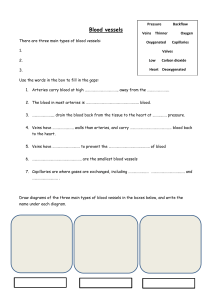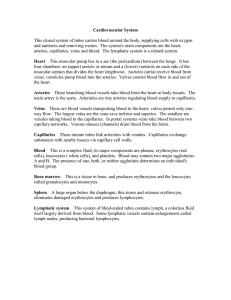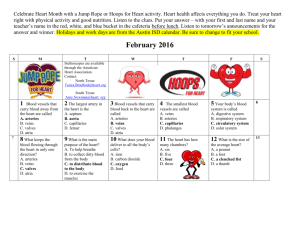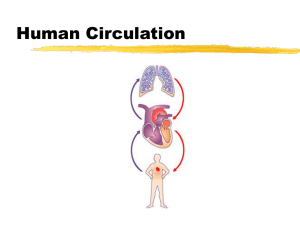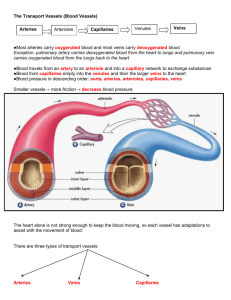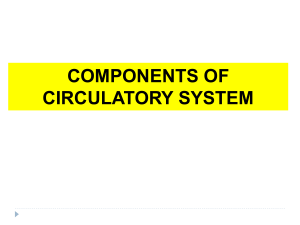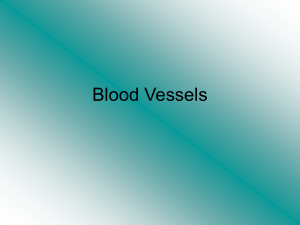Blood vessels
advertisement
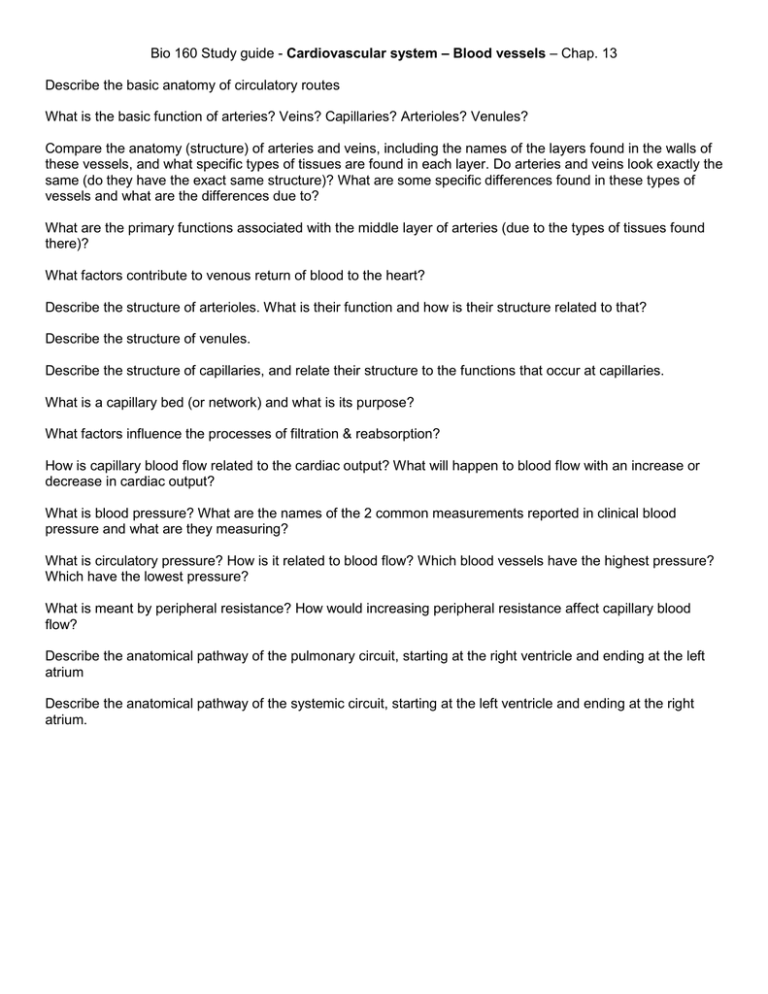
Bio 160 Study guide - Cardiovascular system – Blood vessels – Chap. 13 Describe the basic anatomy of circulatory routes What is the basic function of arteries? Veins? Capillaries? Arterioles? Venules? Compare the anatomy (structure) of arteries and veins, including the names of the layers found in the walls of these vessels, and what specific types of tissues are found in each layer. Do arteries and veins look exactly the same (do they have the exact same structure)? What are some specific differences found in these types of vessels and what are the differences due to? What are the primary functions associated with the middle layer of arteries (due to the types of tissues found there)? What factors contribute to venous return of blood to the heart? Describe the structure of arterioles. What is their function and how is their structure related to that? Describe the structure of venules. Describe the structure of capillaries, and relate their structure to the functions that occur at capillaries. What is a capillary bed (or network) and what is its purpose? What factors influence the processes of filtration & reabsorption? How is capillary blood flow related to the cardiac output? What will happen to blood flow with an increase or decrease in cardiac output? What is blood pressure? What are the names of the 2 common measurements reported in clinical blood pressure and what are they measuring? What is circulatory pressure? How is it related to blood flow? Which blood vessels have the highest pressure? Which have the lowest pressure? What is meant by peripheral resistance? How would increasing peripheral resistance affect capillary blood flow? Describe the anatomical pathway of the pulmonary circuit, starting at the right ventricle and ending at the left atrium Describe the anatomical pathway of the systemic circuit, starting at the left ventricle and ending at the right atrium.
